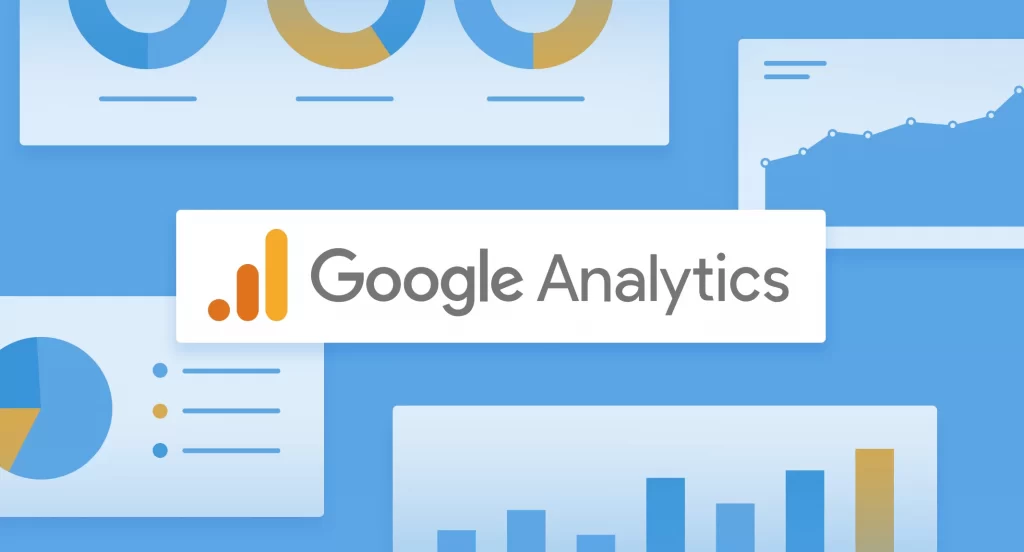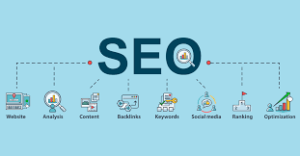Google Analytics: The Ultimate Guide to Measuring Your Website’s Success
5 min read
Last Updated on February 16, 2022 by Jonathan Lopez
Google Analytics is one of the most popular and essential tools businesses use to measure their website’s success. It’s a free tool offered by Google that provides in-depth insights into how your website performs. It tells you everything from how many people visit your website to where they are coming from and what they do when they get there.
It’s no wonder that businesses worldwide are using Google Analytics to measure their website’s success – the tool is packed with features and benefits that can help businesses of all sizes. Google Analytics is a great way to see how your website performs overall. You can see how many people visit your website, where they are coming from, and what they are doing when they get there.
If you’re not using Google Analytics, then you’re missing out on valuable data that could help improve your website’s performance. This article will discuss the benefits of using it and show you how to set it up for your website.
Online learning communities like Tutflix make it easy to take part in the group. From online discussions with classmates to video chatting with faculty, online colleges and universities offer accessible, enjoyable ways for students to become engaged with their education and learning community.
The Benefits of Google Analytics
Google Analytics has several benefits. It helps you track your visitors, boost your site’s performance, and more. Read on to discover just some of the benefits this tool offers.
Track Your Traffic
Google Analytics lets you track your website’s traffic by showing you how many people visit each page of your site. You can also see how long they stay on each page, which pages are the most popular, and where your visitors are coming from.
Track Conversions & Goals
In addition to tracking your website’s traffic, it also allows you to track conversions and goals. This is important because it tells you how many people are taking the actions you want them to take, such as subscribing to your newsletter or making a purchase.
Understand Your Users
You can learn who is visiting your website with the help of Google Analytics – from their age and gender to where they live and what devices they use. This information will allow you to create content that speaks directly to them, which in turn will increase engagement on your website.
Access to Data
Google Analytics is a free tool that provides access to data on the performance of your website. This means you can see how many people visit each page of your website and where they’re coming from, which helps you understand who is interested in what you have to offer.
Improve Your Targeted Marketing
Google Analytics can help you improve your targeted marketing by giving you insights into the demographics and interests of people visiting your website. Businesses have a better understanding of their customer’s behavior, which allows them to provide a more personalized experience for each visitor.
How Businesses Can Utilize Google Analytics
Now that we know all of the wonderful benefits that come with using Google Analytics, it’s time to get down to the basic steps.
#1 Create an Account
The first step in setting up Google Analytics is creating an account. You can do this by visiting google.com/analytics and clicking on the “Sign In” button in the top right corner.
#2 Install the Tracking Code
Once you have created an account, you will be asked to provide your website’s URL. After entering your website’s URL, it will begin tracking your site and gather data about its performance.
You can also install the Google Analytics tracking code on your website so that you can track its traffic. This is done by adding a script to every page of your site, which tells google analytics how many people are visiting and where they’re coming from.
#3 Start Tracking Conversions and Goals
After installing the tracking code, the next step would be to track your conversions and goals. If you want to track conversions and goals, you will also need to add a separate “Goal Conversion Tracking Code” code to the page where your users take the desired action.
#4 Explore Reports
Once you have installed the tracking code on your website, you can view reports by logging into google.com/analytics and clicking on “Reports” in the top menu bar. Google Analytics will show you how many people visit each page of your website and where they’re coming from.
#5 Customize Your Dashboard
You can also customize your dashboard by adding or removing widgets. Widgets are like mini-reports that give you insights into different aspects of your website traffic, such as Demographics, Location, and Technology.
Examples of Companies Who Use Google Analytics
Many large companies use Google Analytics, but it can also be beneficial for small businesses. Here are a few examples of successful companies that have embraced it
Airbnb
Airbnb uses it to track the success of its marketing campaigns and improve on them in real-time. By following their website’s data, they can see how many people visit their site from different sources, what type of content is most popular, and how effective their marketing campaigns are.
Spotify
This famous streaming platform uses it intending to gain premium subscribers. They also want to reach different regions and tap into different local markets. As a result, they experienced a 24% increase in premium subscriptions because people searched for audiobooks on Google.
NASA
Surprisingly, the National Aeronautics and Space Administration uses this Google’s tool. Their photos must be up to quality. NASA relies on it to determine how many of its users are on mobile devices. Since they often live stream their events, it’s imperative that their videos and images are crystal clear.
The Bottom Line
Google Analytics provides you with actionable data about the performance of your website and many other valuable features like demographics and interests of people who visit your site (such as age gender). It also gives insights into different aspects of your website traffic, such as Demographics, Location, and Technology.
If you are a marketer or business owner (no matter how small or big), Google Analytics is the perfect tool to measure your digital marketing and online presence.
Author Bio
Ebnu Sudarso is the Co-founder of Milkwhale, an internationally acknowledged infographic production agency. Graphic design and writing have always been a passion. Over the years at Milkwhale, the company has created and published numerous infographics and great visuals.






